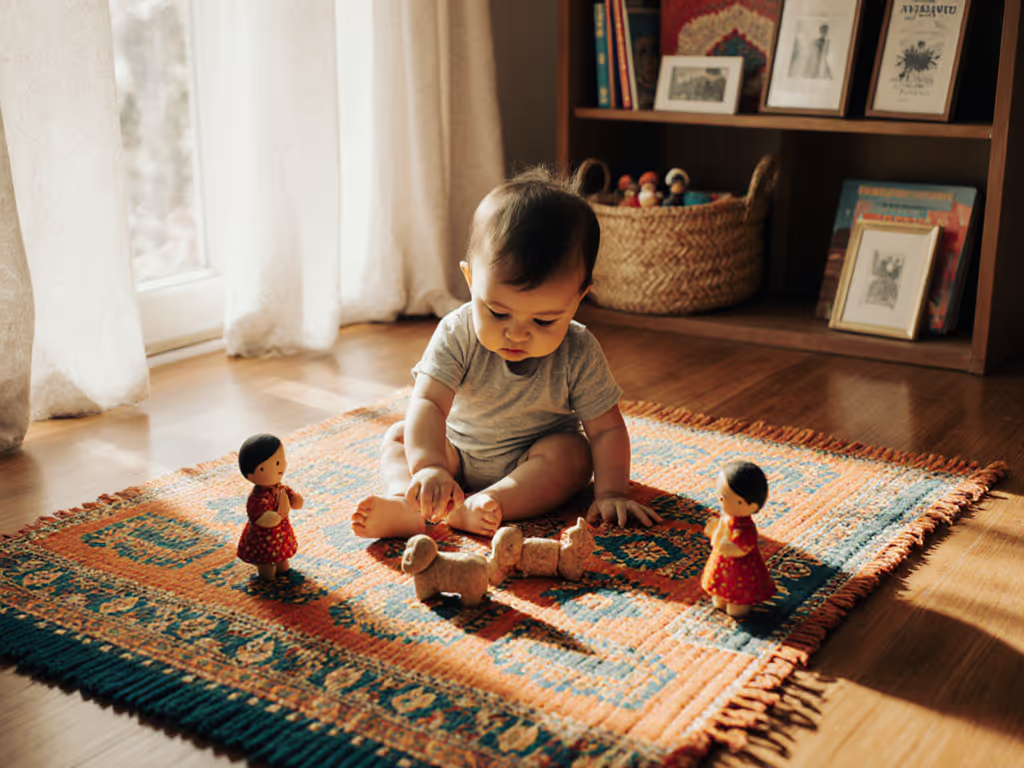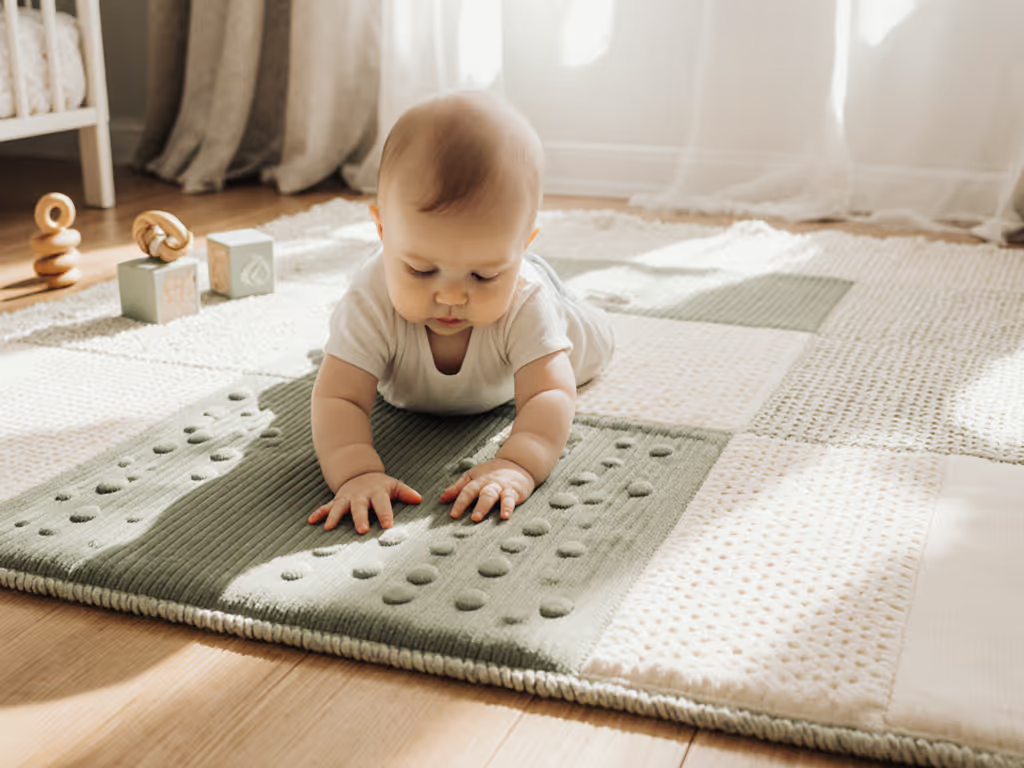
Transform Your Play Mat: 3 Developmental Themes That Last
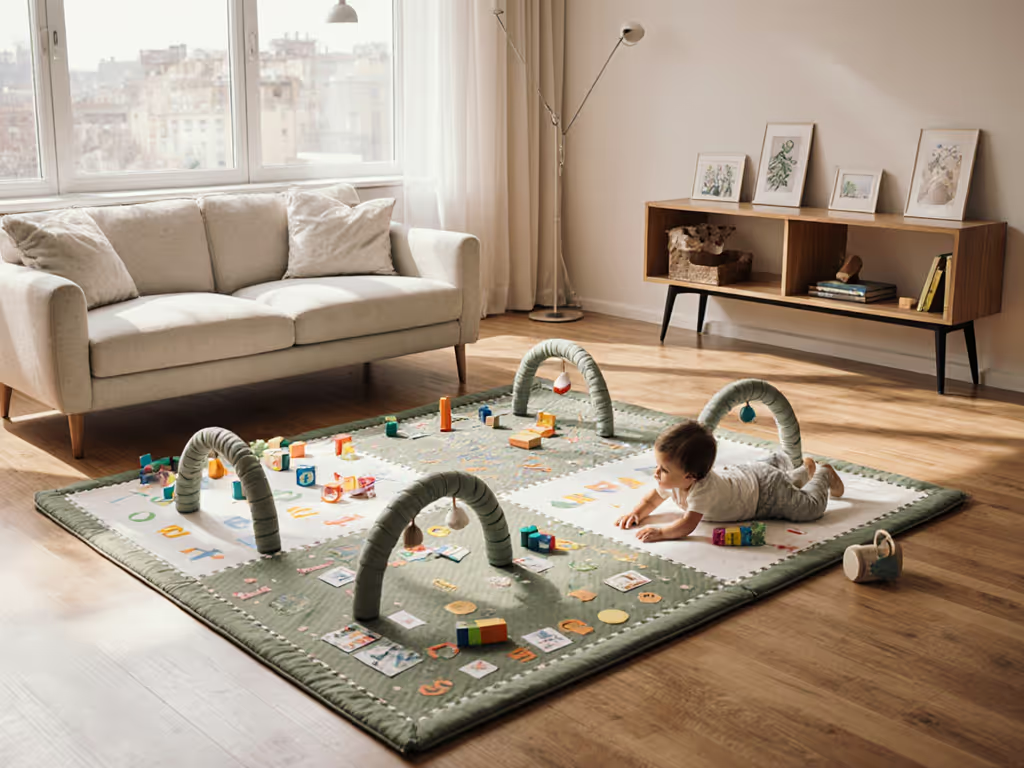
In today's compact urban homes, a well-planned themed play mat must deliver proportional value to its footprint, ideally supporting your child's growth from tummy time through toddlerhood without demanding dedicated square footage. The most successful developmental play mat setup earns its place in your home by serving dual purposes: advancing milestones while respecting your spatial constraints. Square inches are a budget. Make the mat earn them.
Why Most Play Mats Fail the Longevity Test
Most parents cycle through 3-4 play mats before their child reaches age two. A standard 5x5' foam puzzle mat consumes 25 square feet (nearly 5% of a typical 480-square-foot urban apartment), yet gets replaced when baby starts rolling (4-6 months), crawling (7-9 months), and walking (12+ months). These mats rarely integrate with adult living spaces, creating visual clutter that disrupts the calm environments parents strive to maintain.
When my son arrived in our shoebox apartment, we tested mat footprints for a full week. The winning configuration folded under the sofa in six seconds while accommodating rolling, crawling, and supervised standing, all within a 4'x5' zone that cleared our main traffic path. Your home's reality demands more than developmental theory; it requires spatial pragmatism.
Theme 1: The Minimalist Movement Mat (Gross Motor Foundation)
This approach prioritizes physical development through intentional negative space rather than visual stimulation. Think of it as a "movement runway" where baby's body, not the mat's design, creates the activity.
Key specifications:
- Dimensions: 48" x 60" (122cm x 152cm), sufficient for rolling range with 12" clearance from furniture
- Thickness: 0.4" (1cm) firm cushioning, enough for impact absorption without compromising stability during pull-ups
- Color strategy: Monochromatic with subtle texture variations (e.g., woven vs. smooth sections)
The Minimalist Movement Mat works because it avoids visual overstimulation that can distract from motor skill development. Unlike alphabet mats that become irrelevant after 18 months, this setup adapts to each stage:
- Newborn (0-3 months): Central 36" diameter zone for tummy time
- Roller (4-8 months): Full surface for lateral movement with furniture anchors at perimeter
- Crawler (9-15 months): Integrated "obstacle course" using stored furniture (ottoman, storage bench)
- Toddler (16+ months): Yoga mat alternative for parent use during nap time
Trade-off: Less inherent visual stimulation requires more active parental engagement. But this aligns with research showing that baby's attention spans increase when caregivers participate in floor play rather than relying on mat graphics alone.
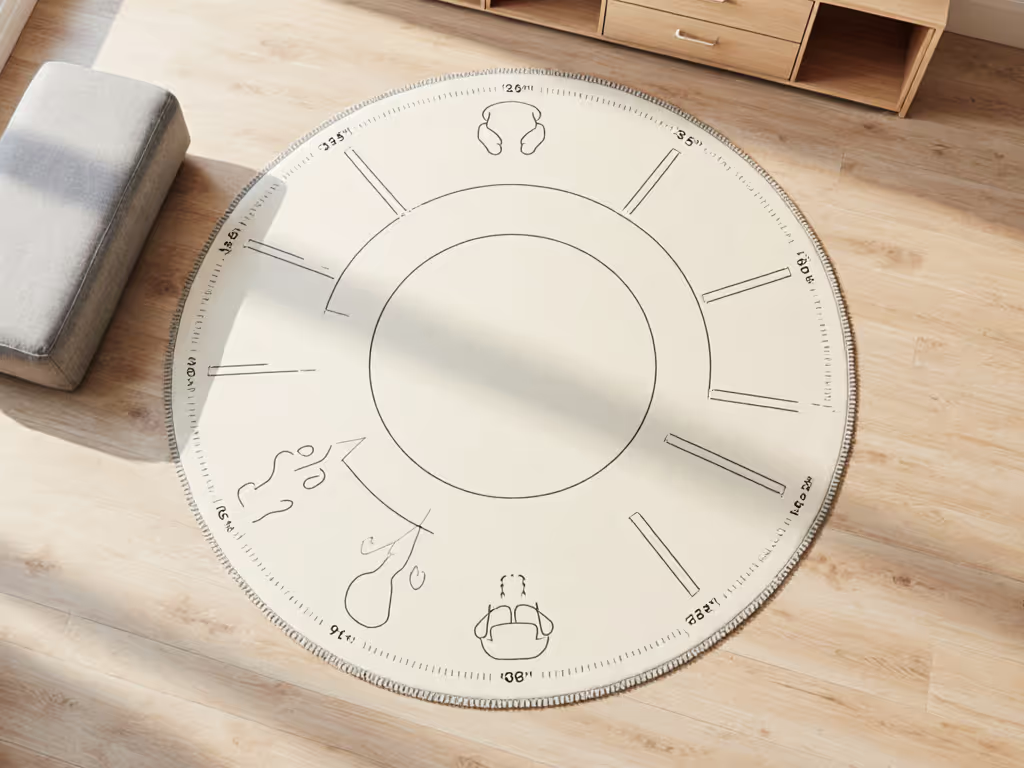
Theme 2: The Communication Catalyst (Language Development)
Rather than permanent printed letters, this approach uses modular elements that evolve with your child's language exposure. The mat becomes a stage where sounds, words, and eventually sentences unfold. For bilingual activity ideas that evolve with your child's language exposure, explore our Multilingual Play Mat Guide.
Key specifications:
- Dimensions: 40" x 48" (102cm x 122cm), fits under standard sofa clearance heights when rolled
- Thickness: 0.6" (1.5cm) memory foam, sufficient for seated language sessions without creating instability
- Color approach: 70% neutral base (greys, taupes) with 30% high-contrast focal points (navy, terracotta)
This setup centers around a "conversation circle" where parent and child sit facing each other. The magic happens through removable elements:
- Stage 1 (6-12 months): Textured fabric squares with single high-contrast images (ball, dog) for object recognition
- Stage 2 (13-18 months): Double-sided cards with image + word ("ball"/"pelota") for bilingual development
- Stage 3 (19-24+ months): Magnetic sentence strips that build simple phrases
Trade-off: Requires parent participation to swap elements, but this builds into natural daily routines. More importantly, when your child outgrows the mat's developmental purpose, store the panels and repurpose the base as a pet bed or meditation pad (true lifecycle value).
Supporting research shows that language-rich interactions on a consistent surface strengthen neural pathways. But the real spatial advantage emerges when you consider storage: rolled dimensions of 4"x48" fit vertically behind most closet doors.
Theme 3: The Sensory Integration Hub
This approach focuses on neural development through tactile variety rather than visual busyness. Rather than a single printed scene, it offers distinct zones that address different sensory processing needs.
Key specifications:
- Dimensions: 36" x 48" (91cm x 122cm) with modular 12"x12" sections
- Thickness: Variable (0.3"-0.8"), softer zones for calming, firmer for active exploration
- Color philosophy: Earth tones with texture differentiation (no visual cues needed)
The Sensory Integration Hub works within tight spaces because it serves multiple household functions:
- Calming corner: 12"x24" textured section for overstimulated moments
- Movement zone: Firm center area for crawling practice
- Meal prep spot: Water-resistant panel doubles as high chair mat
- Adult use: Full mat unrolled for floor exercises during nap time
Trade-off: Texture variations require more frequent spot-cleaning than uniform surfaces. However, the modular design means only affected sections need attention, preserving the rest of the mat's usability during messes.
Unlike traditional sensory mats that become visually overwhelming in adult spaces, this approach uses texture rather than color for differentiation. The neutral palette (muted olives, charcoals, clays) maintains aesthetic harmony while providing crucial developmental input.
Creating Your Multi-Stage Developmental Play Mat Setup
Your optimal mat configuration depends on three spatial factors:
- Daily traffic flow (measure peak hour footpaths with painter's tape)
- Sunlight patterns (track where light hits during nap hours)
- Furniture integration points (identify pieces that can double as play anchors)
Buy once, use longer. This isn't just about saving money, it is about reducing decision fatigue and visual clutter in your home.
The most successful setups share these characteristics:
- Rollable or foldable within 15 seconds for daily storage
- No visual "busy-ness" that competes with your decor
- Clear transition zones between adult and child areas
- Storage solution that takes less space than the mat itself when stowed
When evaluating sensory play mat ideas or motor skills play mat configurations, ask: "Will this still serve a purpose when my child walks confidently?" If the answer requires discarding components, reconsider. True developmental value means the mat evolves with your child, not for a single stage.
Actionable Next Step: Your One-Week Mat Audit
Before committing to any play mat, conduct this spatial reality check:
- Map your floor with low-tack tape in your intended mat dimensions (start with 40"x48")
- Track traffic patterns for 72 hours, note where family members naturally pause or alter paths
- Test storage (time how long it takes to roll/fold and stow the taped area)
- Sunlight test (mark where direct light hits during typical play hours)
- Milestone simulation (crawl across the space to test stability for pull-ups)
Document where the taped zone conflicts with daily life. If it captures more than 15% of your main living area or requires constant relocation, scale down. The winning configuration will sit in a zone where your child plays naturally, not where you think they "should" play.
Your home's constraints aren't limitations; they are design parameters. The mat that stays woven into your daily rhythm, adapting to changing needs without demanding new space, earns its place. Measure twice, mat once. With the right themed baby activity area approach, your play mat won't just support development, it will become an invisible yet essential thread in your home's functional fabric.
Related Articles

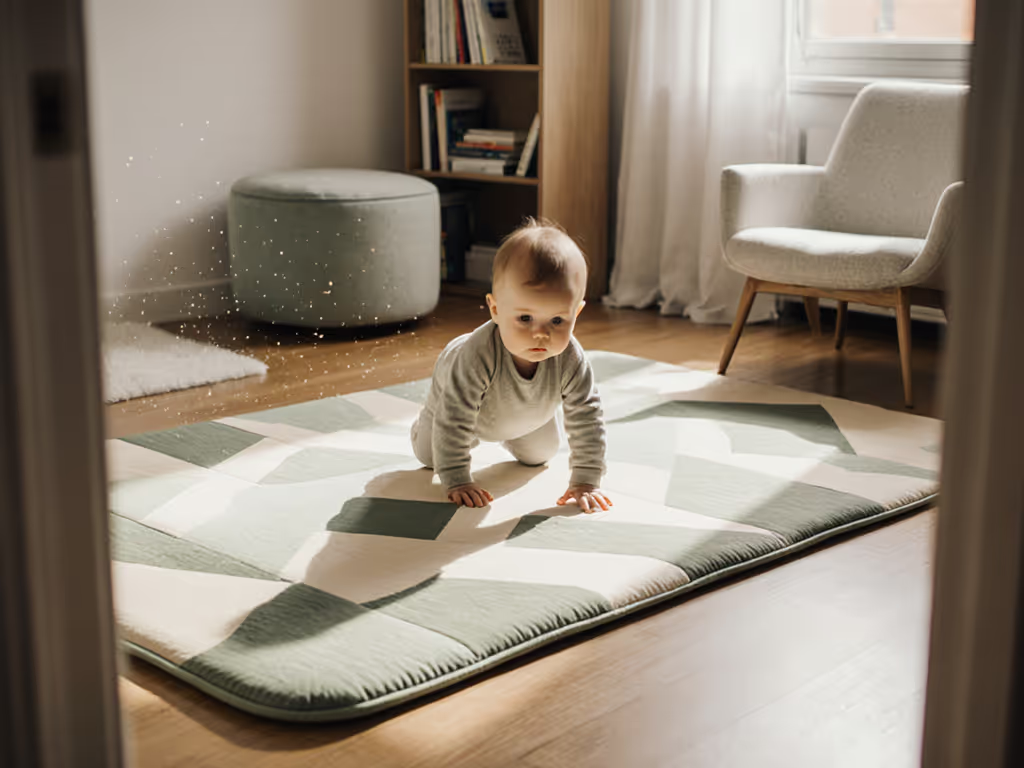
Motor Skill Play Mats: Space-Smart Baby Development Surfaces
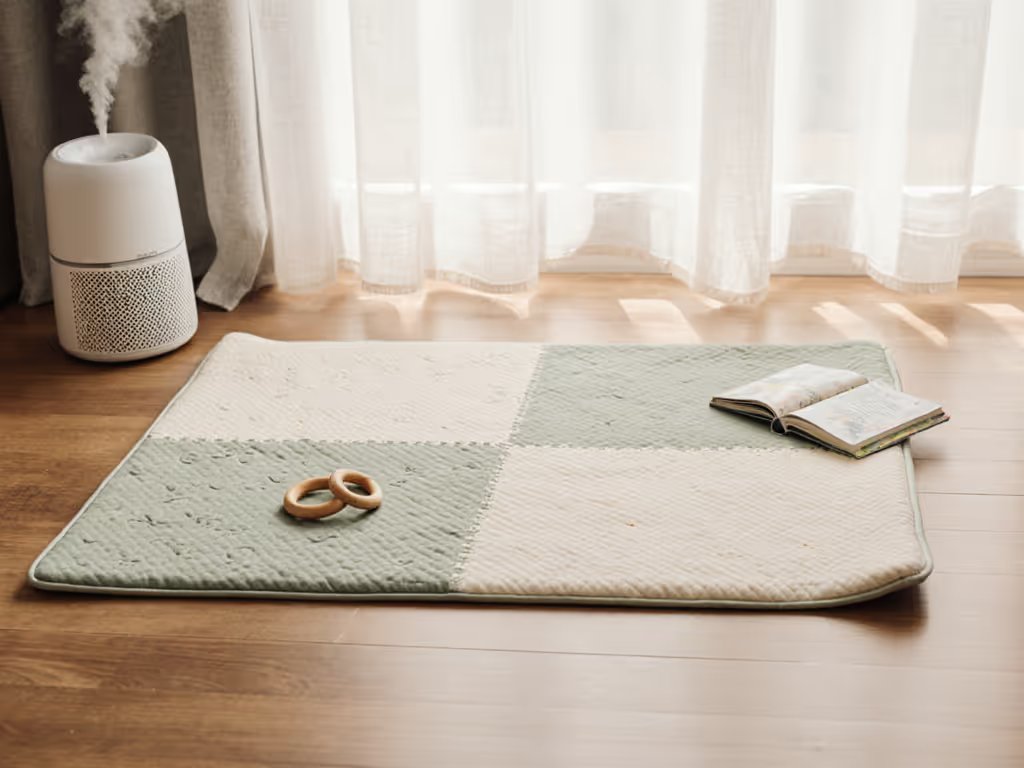
Preemie-Safe Play Mats: Evidence-Based Selection Guide
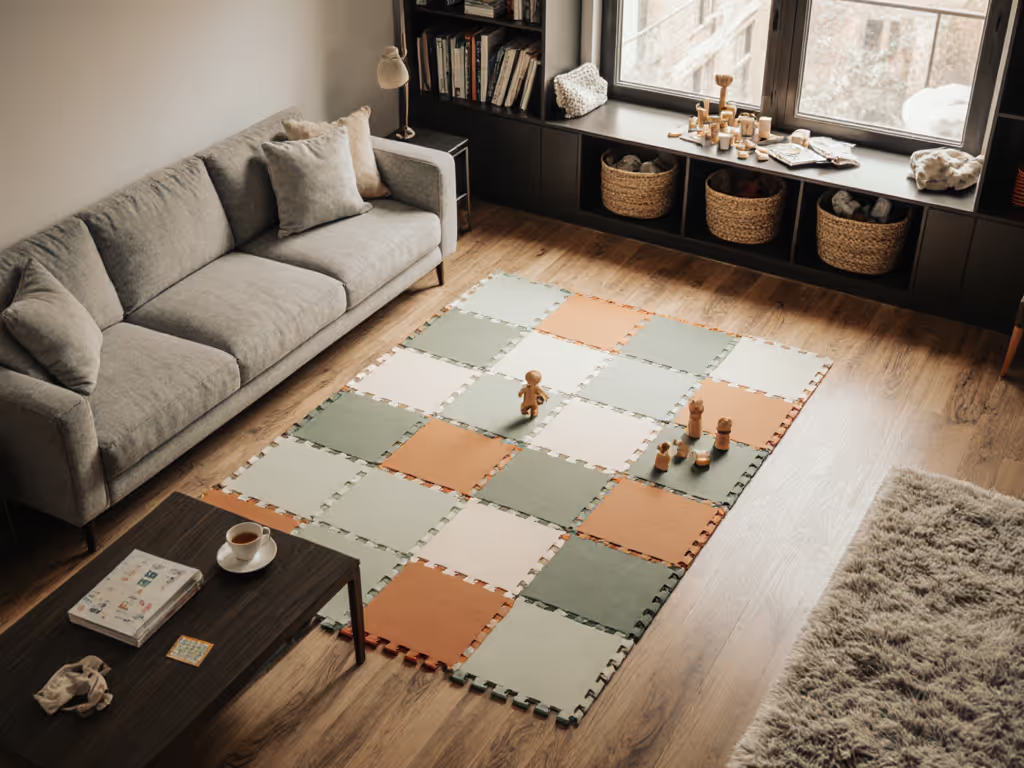
Multi-Gen Play Mat Setup for Shared Living Spaces
